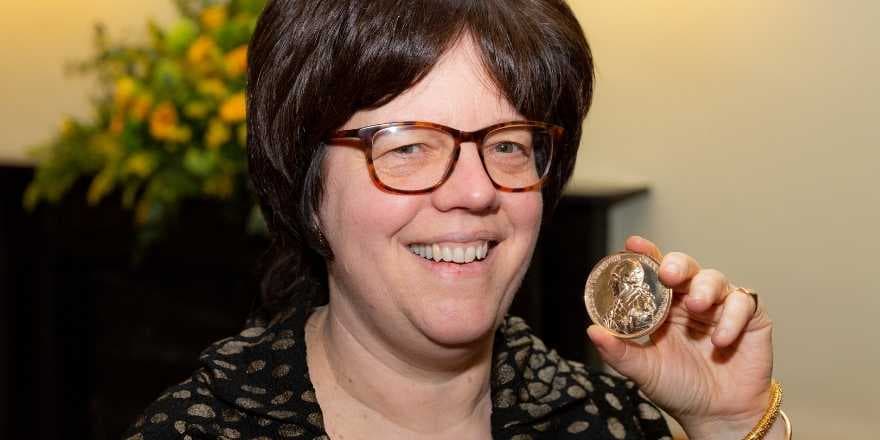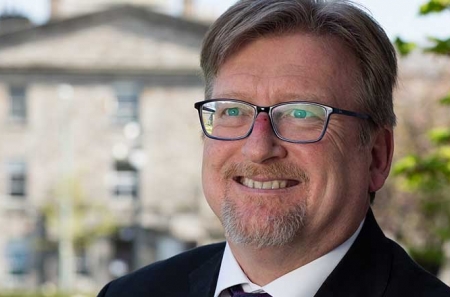
Kathleen James-Chakraborty MRIA: Architectural Historian
30 October 2020Professor James-Chakraborty’s scholarship addresses the connections between buildings and the societies that erect them.
Kathleen James-Chakraborty MRIA, Architectural Historian, University College Dublin
Buildings matter. We all inhabit them. At their best they have the power to transform our lives through the artistry that informs their design and their construction. At their worst they heighten anxiety and the marginalisation of those who are already disempowered by poverty, racism and sexism. My scholarship addresses the connections between buildings and the societies that erect them.
As a discipline, architectural history has focused disproportionately on a small corpus of buildings of outstanding artistic merit, attributed almost exclusively to the men credited with designing them, with the credit shared in some cases with the client who commissioned them. My interest is in analysing the political, cultural and economic contexts in which the architect and the client make decisions, such as the choice of forms—including styles—that are intended to communicate particular meanings. I am also interested in identifying who the audience for those meanings may be.
Technological innovations, such as the development of reinforced concrete, can provide opportunities to create new kinds of spaces. Paying close attention to the specific needs associated with particular building types as diverse in their requirements as department stores and churches, has enabled me to reconstruct the ways in which German commercial and religious architecture was, during the Weimar Republic (1919–33), relentlessly modern, without closely resembling the Bauhaus or the housing estates that have dominated most accounts of this transformative chapter in the history of architecture.
The original focus of my scholarship was on twentieth-century German architecture. Over time, however, it has expanded to encompass architecture around the world since 1400, with a particular focus on the contributions of women. I am also strongly committed to telling more inclusive histories. This can manifest itself in quite different ways. In German Architecture for a Mass Audience, I explored the degree to which stylistic changes adopted by actors across the political spectrum in twentieth-century Germany all shared the intent of creating communities across class lines. In Architecture since 1400, I demonstrated that modernity and modernism were never the exclusive property of people of European descent, and that slave cabins and shanty towns belong beside palaces and parliaments in a global approach to this history of architecture.
Gender also matters. In recent work on Denise Scott Brown and Zaha Hadid, two of the most celebrated women architects of the last half century, I seek to uncover the circumstances, including growing up in privileged households on the fringes of the British empire, that help account for their success. I am equally committed to expanding our understanding of who has had agency over the appearance of the built environment by documenting the contributions of women who have shaped taste through their careers as journalists and real-estate developers, or by running influential design businesses. I am also collaborating with conservation architect Bryan Clark Green in drawing attention to the Robert Vann Memorial Tower on the campus of Virginia Union University in Richmond. Named for an influential Black journalist, it provides an important counterweight to the Confederate memorials that long dominated nearby Monument Avenue.
An additional concern of my work is the creation of an active, engaged public that contributes to the shaping of the environment in which we live. As a scholar, I have demonstrated the way in which Germans learned to be democratic in part through public debates over the shape their cities should take. Architecture is central to the creation of equitable and sustainable societies, and it remains at the core of human experience, including of our greatest collective challenges.
Read other Member Research Series articles



